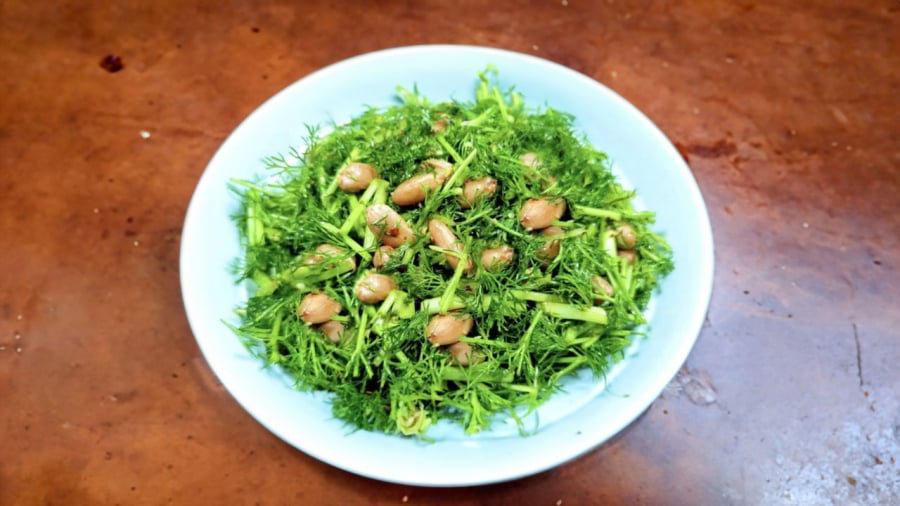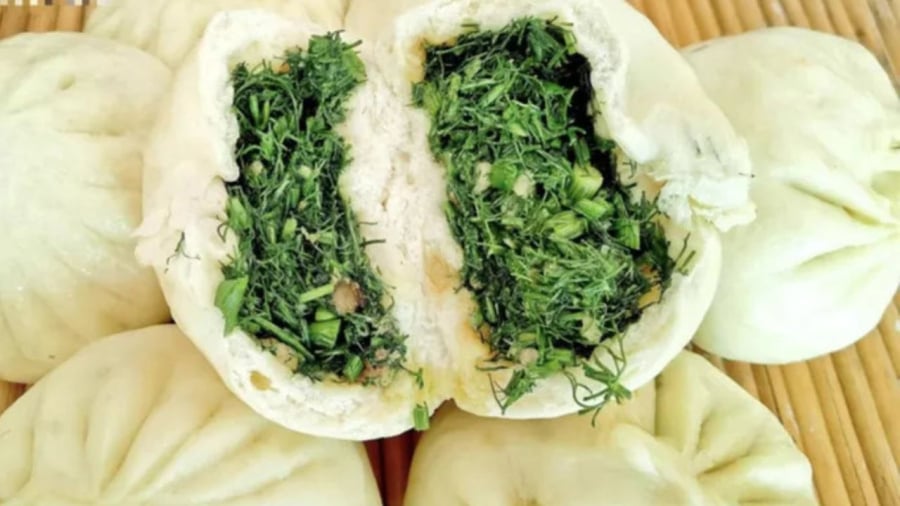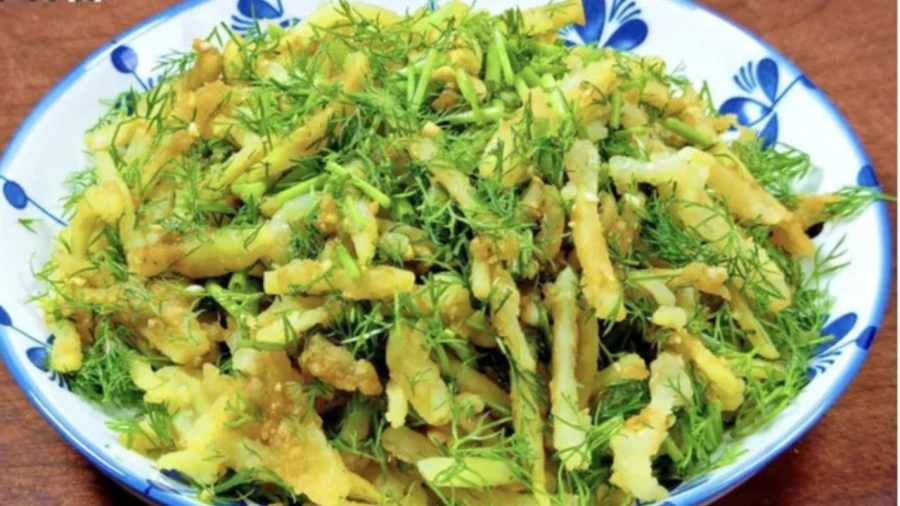Rau thì là is a type of herb often used in fish and squid dishes, helping to eliminate fishy odors and create fragrant flavors. Rau thì là is considered a precious medicinal herb in traditional Vietnamese medicine. Modern medical analysis shows that thì là is a herb rich in essential oils such as anisone and anisol, as well as high in vitamin C, calcium, iron, and other minerals and vitamins that boost the immune system, enhance calcium absorption, and provide iron supplementation. It is an excellent food for overall health.
Thì là is good for nursing mothers, helps increase milk production, and reduces colic in infants. Thì là is also beneficial for boosting immunity, supporting anti-inflammatory conditions in the body, reducing coughs, and treating sore throats. Thì là is also a good vegetable for increasing breast size and supporting male sexual health. So, be sure to actively consume thì là for its health benefits.
The delicious dishes below allow you to fully experience the flavor of thì là instead of just using it as a seasoning.

Fried Fish Cake with Thì Là
Lã Vọng-style fish cake is a famous dish, in which thì là and scallions are consumed as accompanying herbs.
Ingredients: Fresh snakehead fish (500g), minced galangal (2 tablespoons), minced ginger (2 tablespoons), minced purple onion (2 tablespoons), scallions (5 sprigs), lime (1 fruit), fresh chili (1 fruit), turmeric powder (1 teaspoon), pickled mustard greens (2 tablespoons), shrimp paste (2 tablespoons), roasted peanuts (100g), fresh rice noodles (1 kg), herbs (some), cooking oil (2 tablespoons), salt (some)
Instructions:
Clean and rinse the fish with alcohol to remove any fishy odor. For this dish, it is best to use snakehead fish, but if unavailable, you can use snakehead murrel (giant snakehead) as an alternative. Marinate the fish meat with 2 tablespoons of pickled mustard greens, 2 tablespoons of minced galangal, 2 tablespoons of minced ginger, and 2 tablespoons of minced purple onion. Add 2 tablespoons of shrimp paste and 1 teaspoon of turmeric powder. Mix well and marinate the fish for 2 hours. Rinse and cut the thì là and scallions into bite-sized pieces, about 2 finger joints in length. Finely chop the scallion roots.
After marinating the fish, bake it in the oven or deep-fry it without oil at around 180 degrees Celsius for about 20 minutes.
When serving, add a little cooking oil to a pan, add the thì là and scallions, stir-fry them with the fish, and place it in the middle of the dining table, served with rice noodles.
Thì Là and Peanut Salad
Ingredients: Thì là, raw peanuts, garlic, ginger, salt, sesame oil

Instructions:
– Wash the thì là, pat dry, cut into small pieces, and set aside.
– Rinse the raw peanuts, soak them in warm water for about 2 hours, then put them in a pot with scallions, ginger, star anise, and cinnamon leaves, and boil for 10 minutes until the peanuts are soft. Add salt for a flavorful taste. Then, remove the peanuts.
– Mix the boiled thì là and peanuts in a large bowl, season with suitable amount of salt, add sesame oil, mix well, and serve.
Thì Là and Pork Buns
Ingredients: Minced pork, thì là, wheat flour, yeast, sesame oil, salt, fish sauce or soy sauce, cooking oil

Instructions:
– Make the dough: Mix 500g of wheat flour and 3g of yeast in a bowl, stir well, then knead the dough with a little water until smooth. Put the dough in a covered bowl or wrap it with plastic wrap and let it rise until doubled in size.
– Season the minced pork with fish sauce, salt, and sesame oil. Mix well and then mix it with the thì là.
– When the dough has risen, divide it evenly, roll it out thinly, then put the filling inside and wrap the buns. Steam the buns for 15-20 minutes.

Sautéed Thì Là with Potatoes
Ingredients: Potatoes, thì là, minced garlic, soy sauce, starch, sesame oil
Instructions:
– Peel the potatoes, cut them into small pieces, add a suitable amount of starch, and mix well. Add water to a pot and steam the potatoes until cooked.
– After cleaning the thì là, drying it, and cutting it into small pieces, add it to the pot with the potatoes and stir-fry them with minced garlic, soy sauce, and sesame oil.
In addition to the dishes mentioned above, you can also add thì là to many other dishes such as potato and meat stew, braised fish with thì là, fish soup with thì là, thì là mixed with minced fish to make a cake, sautéed thì là with fish innards, adding thì là to potato soup, stir-fried potatoes, and thì là into potato and thì là buns.






























